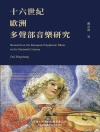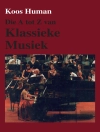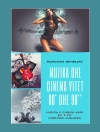Essays illuminating a complex and sophisticated musical manuscript.
The Segovia Manuscript (Cathedral of Segovia, Archivo Capitular) has puzzled musicologists ever since its rediscovery at the beginning of the twentieth century. It is unique: no other manuscript of the period transmits a comparable blend of late fifteenth-century music, consisting of 204 sacred works and vernacular pieces in Flemish, French, Italian, and Spanish. An important group of pedagogical pieces by French and Flemish composers may preserve transcriptions of instrumental improvisation. This summary might suggest a messy collection, but on the contrary the manuscript is arranged with care, copied by one proficient scribe (except perhaps for the Spanish texts), who obviously followed a predetermined master plan. But which plan, who designed it, and why was the person responsible so interested in this combination?
The essays here aim to treat every dimension of this fascinating source. New discoveries help date the manuscript and explain how it came to Segovia; particular attention is paid to the main scribe, now determined to be Flemish, and his relation with northern composers and repertory, above all that of Jacob Obrecht, Alexander Agricola, and Henricus Isaac; and the vexed question of the conflicting attributions is considered afresh and found to affect only a few of the fascicles. The contributors also look at questions of ownership and function. .
WOLFGANG FUHRMANN is Professor of Musicology at Leipzig University; CRISTINA URCHUEGUÍA is Professor of Musicology at the University of Bern.
Contributors: Bonnie J. Blackburn, Wolfgang Fuhrmann, Leofranc Holford-Strevens, Tess Knighton, Kenneth Kreitner, Honey Meconi, Emilio Ros-Fábregas, Cristina Urchueguía, Rob C. Wegman
Tabella dei contenuti
Preambulum: A Source in Segovia
In Search of Origins: The Afterlife of a Renaissance Manuscript
New Light on the Segovia Manuscript: Watermarks, Foliation, and Ownership
Segovia’s Repertoire: Attributions and Datings (with special reference to Jacob Obrecht)
What Was Segovia for?
The Latin Texts of the Segovia Manuscript
The Segovia Manuscript as Chansonnier
The Segovia Manuscript: Another Look at the ‘Flemish Hypothesis’
The Segovia Manuscript: Speculative Notes on the Flemish Connection
The Written Transmission of Polyphonic Song in Spain c. 1500: The Case of the Segovia
Inventory of Segovia, Archivo Capitular de la Catedral, MS S.S.












